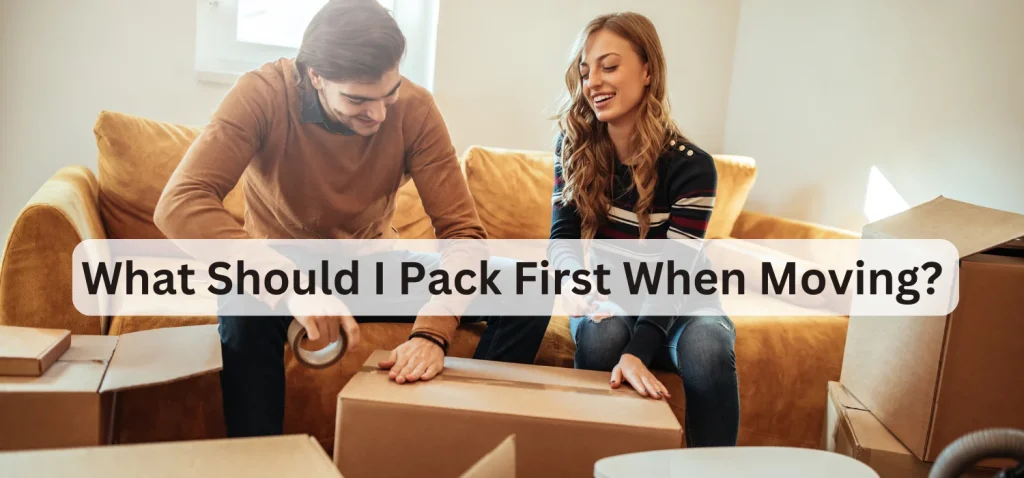Moving to a new place can be exciting but also stressful. One of the biggest challenges knows what to pack first. It may seem like an overwhelming task but with the right approach, it doesn’t have to be.
In this article, we’ll guide you through the process of packing efficiently including tips on how to prioritize your packing. This will help you get organized and ensure a smoother move. Whether you’re working with Packers and Movers or doing it yourself, packing strategically can save you time and effort.
Why Packing Order Matters
Before diving into what to pack first, it’s important to understand why packing order matters. When moving, you want to pack items in a way that minimizes disruption to your daily life. Packing in the wrong order can lead to unnecessary stress and confusion. By following a well-thought-out plan you can avoid common pitfalls like having to unpack boxes to find everyday items.
A Packing and Moving Company can offer professional help, making this process even more manageable. But whether you're using a Packing and Moving Service or handling the packing yourself, the first step is getting organized.
Step 1: Create a Packing Plan
The first thing you need to do is make a plan. Without one, it’s easy to feel overwhelmed. Here’s what your plan should include:
- Timeline: Estimate how long it will take to pack each room. Larger rooms with more items will naturally take longer.
- Room by Room Approach: Divide your house into sections and decide which rooms to pack first and last.
- Essentials Box: Always prepare a box of essentials that will go with you during the move. This includes things like toiletries, medications, important documents and a change of clothes.
A Packing and Moving Company can help you create a packing plan tailored to your specific needs, making it even easier to stay organized.
Step 2: Start with the Non-Essentials
One of the first rules of packing is to begin with items you don’t use on a daily basis. These are often called non-essentials and they are the perfect starting point. Here’s a list of non-essentials to pack first:
Seasonal Items
If you're moving in the summer, pack up all your winter clothing, coats, boots and accessories first. The same goes for any holiday decorations or seasonal sports equipment. You won’t need these items immediately after the move so they can be packed early on.
Books & Decorations
Books, knick-knacks and wall decorations like paintings or framed pictures are other examples of non-essential items. You don’t need them in your daily routine so start boxing them up right away.
Extra Linens & Towels
You likely have more bedding, towels and linens than you need daily. Pack away extra sets of sheets, blankets and towels that you won’t use until after the move.
Step 3: Tackle Less Frequently Used Rooms
Once your non-essentials are packed, move on to rooms that don’t get as much daily use. These rooms often have items that you can easily pack ahead of time without disrupting your routine.
Guest Rooms
If you have a guest bedroom it’s a good idea to pack everything in this room early on. Guest rooms typically contain extra bedding, furniture and clothing that won’t be needed right away.
Storage Areas
Another great place to start is your storage areas. This includes basements, attics and garages. These spaces are often filled with things you don’t need every day such as holiday decorations, tools and keepsakes.
A Packers and Movers can help you box up these less frequently used rooms efficiently, ensuring that everything is labeled and organized for an easy unpacking process later.
Step 4: Focus on Specialty Items
Specialty items are those that need extra care during packing. This includes fragile items, valuable possessions and large pieces of furniture. Here’s how to approach them:
Fragile Items
Pack delicate items like glassware, china and vases early in the process. Use proper packing materials like bubble wrap, packing paper and sturdy boxes to prevent breakage. Label these boxes as fragile so that they are handled with care by the movers.
Electronics
Computers, TVs and other electronics should be packed carefully or it’s best to do this early. Be sure to keep the original boxes if you have them, as they offer the best protection for your electronics.
Hiring a Packing and Moving Company can give you peace of mind when dealing with fragile and valuable items as professionals know the best methods to keep everything safe during transit.
Step 5: Clothing & Personal Items
After packing your non-essentials and specialty items you can start packing clothing and personal items. It’s best to leave a week’s worth of clothing and essentials out until the final days before the move. Here's how to approach it:
Off-Season Clothing
Like your seasonal items, pack up clothing that is out of season first. You won’t need your winter jackets in the middle of summer so these can be packed early.
Shoes & Accessories
Similarly any shoes, handbags or accessories you don’t use daily can be packed ahead of time.
Step 6: Kitchen & Bathroom Essentials
The kitchen and bathroom are typically the last rooms to be packed as you will still need these items up until the move. However, you can still pack non-essential kitchenware and bathroom items to lighten the load.
Kitchenware
Start by packing up dishes, pots and pans you rarely use. Keep a minimal set of kitchen essentials for cooking during your last days in your current home.
Bathroom Items
Similar to the kitchen, pack up bathroom items you don’t use daily such as extra towels, grooming tools and skincare products. Leave out only what you will need for your final week in the home.
Step 7: Furniture & Large Items
Finally, you’ll want to disassemble and pack your large furniture pieces. This can include beds, dining tables and large shelves. If you are using a Packing and Moving Service, they will handle this part for you which can save a lot of time and effort.
Disassemble Furniture
Start disassembling furniture that isn’t being used frequently. Be sure to keep screws, bolts and small parts in labeled bags so that reassembling them in your new home is easy.
Wrap Furniture for Protection
Use furniture blankets or bubble wrap to protect your larger pieces during the move. This is especially important for items that can easily get scratched or damaged.
Trust the Process
Packing can be a daunting task but if you tackle it in a strategic and organized way it becomes much easier. Start with non-essentials, move on to less-used rooms, pack specialty items carefully and leave the essentials for last. Whether you are packing yourself or using a Packing and Moving Company, following this plan will make your move smoother and more efficient.
Remember, the key to a stress-free move is preparation and organization. Happy moving!

